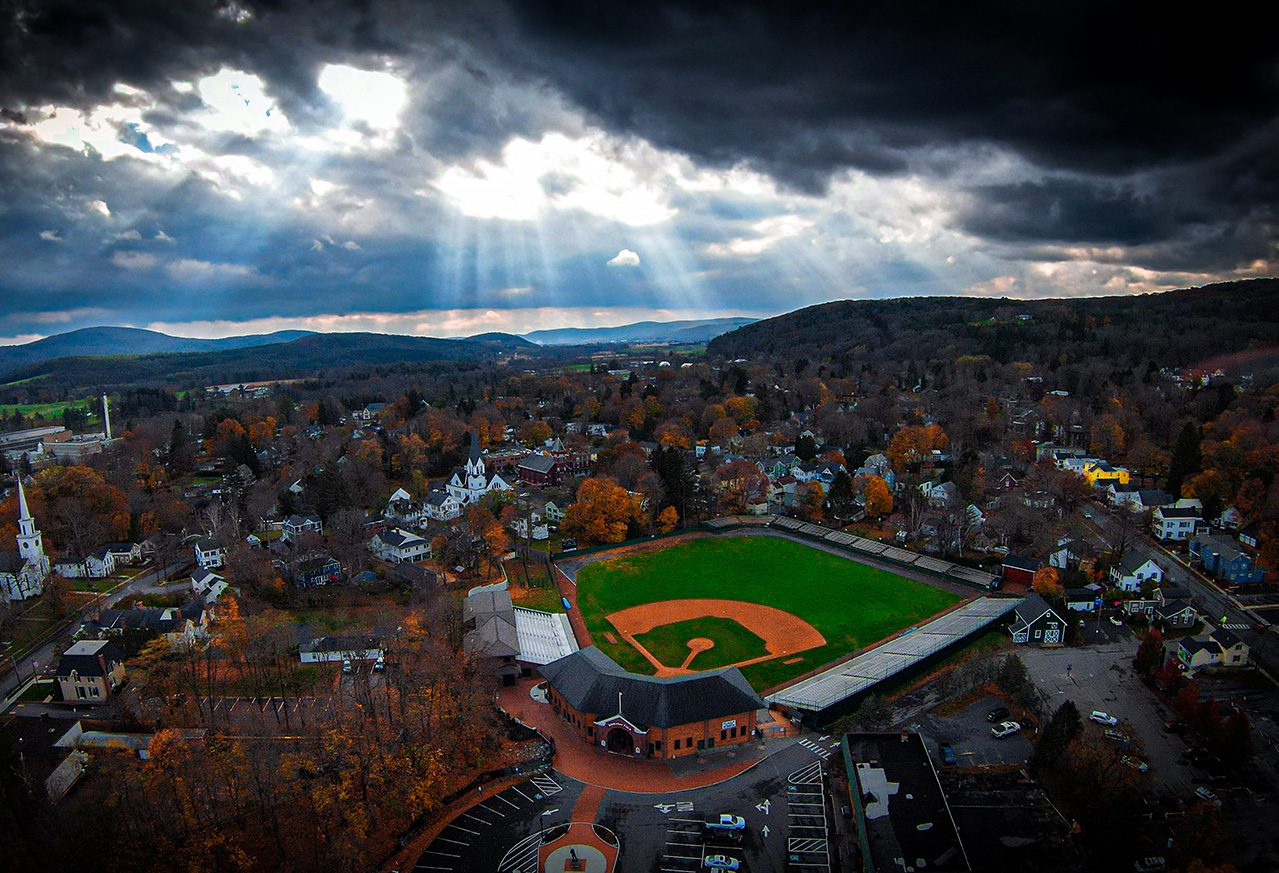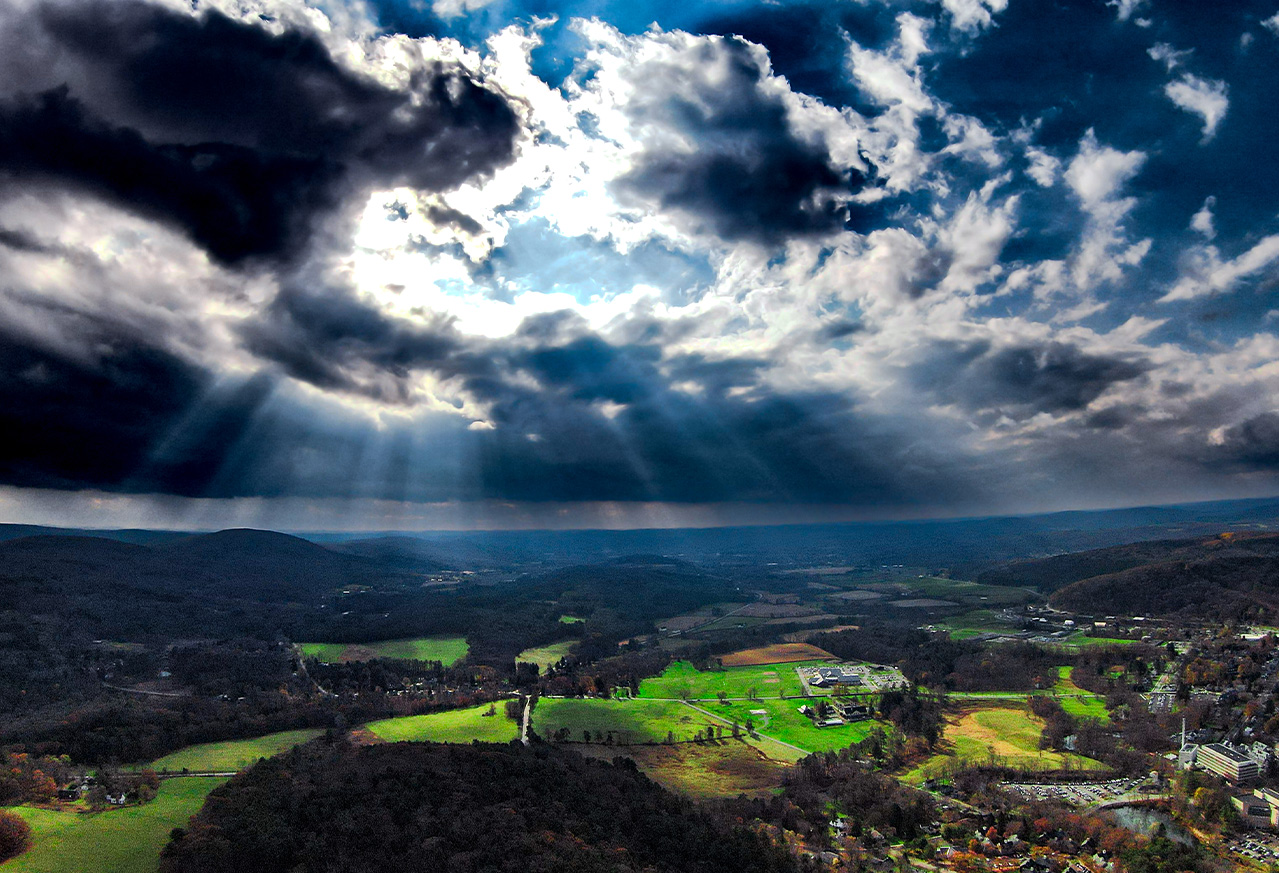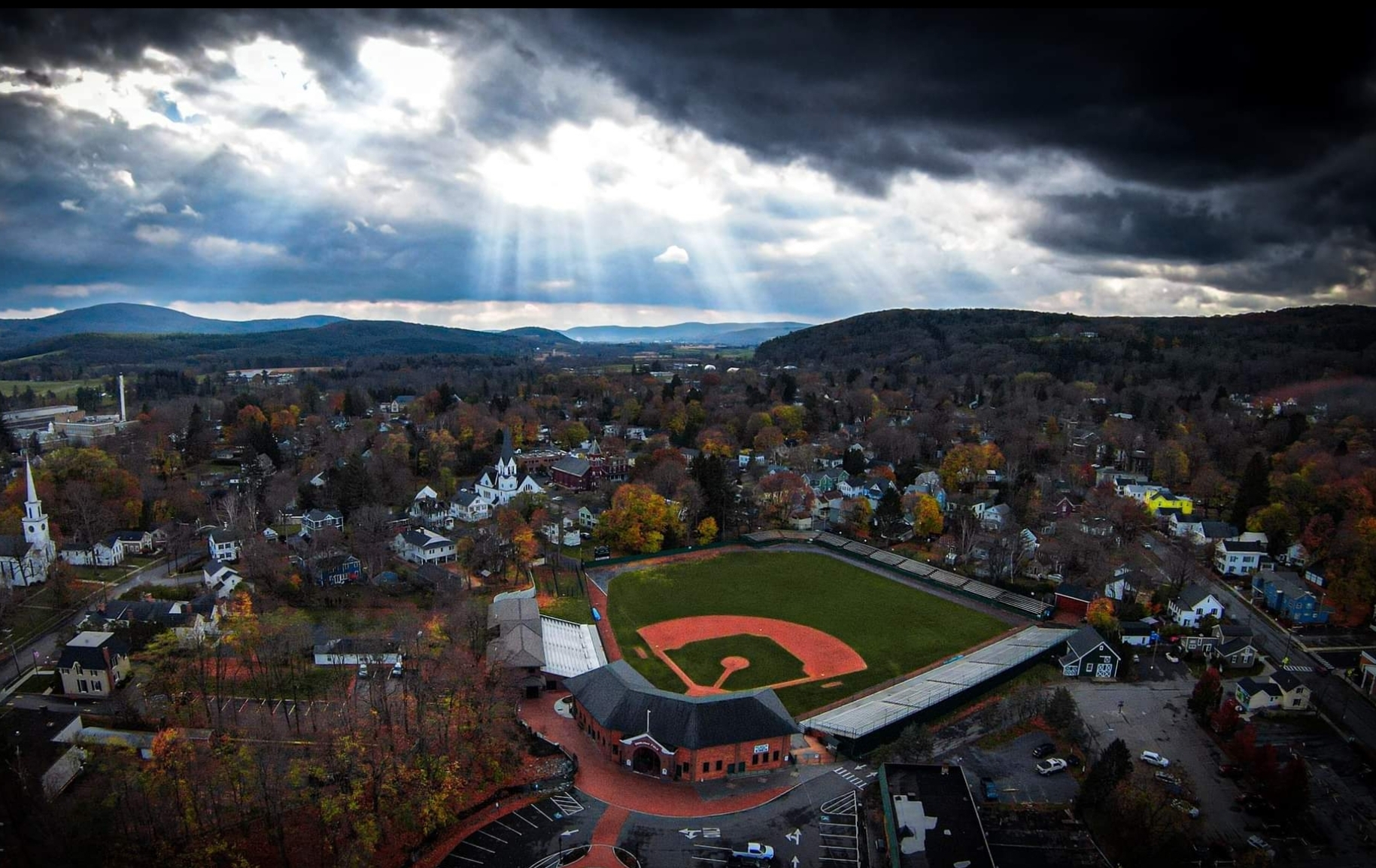Beautiful CLouds
Spectacular
Coloration
Kingfisher Tower emerges like a storybook legend as the sunset sets Otsego Lake ablaze with color. This Cooperstown landmark is a testament to the enchantment that dwells within our own backyard.
As the skies transition from day to night, the tower stands proudly, a silent guardian over the serene winter waters. This shot captures the magic that wraps our quaint town in mystery and magnificence.
INTERESTING FACT: Inspired by European Architecture: Kingfisher Tower was designed to emulate the style of a medieval European castle tower. It was constructed in 1876 by Edward Clark, a wealthy businessman and philanthropist who was also a co-founder of the Singer Sewing Machine Company. The tower was intended as a decorative folly – a purely ornamental piece meant to enhance the landscape and evoke the grandeur and romance of the old world.
Beautiful
Light Beams
History whispers in every corner of Cooperstown, but today, the skies above Doubleday Field spoke volumes! As I captured this moment, the clouds danced to an ancient rhythm, parting just enough for sunrays to grace the diamond. It’s a breathtaking scene where the past meets the present in a celestial spotlight.
INTERESTING FACT: Origin and Myth: Doubleday Field is named after Abner Doubleday, who was once credited with inventing the game of baseball in Cooperstown in 1839. While this origin story has been widely debunked — baseball evolved from earlier bat-and-ball games — the myth persists and has made the field a symbolic site. The field stands as a tribute to this enduring legend and Cooperstown’s role in the cultural history of baseball.
Beautiful
Beams
Above the rolling hills of Cooperstown, the sky puts on a dramatic show. The dark clouds part as if commanded by an unseen force, allowing beams of sunlight to pierce through and illuminate the land below. It’s a natural masterpiece, a fleeting glimpse of the sublime power above us.
Interesting FaCT: Agrarian Innovations: Farmers in the Cooperstown area have been known for their innovative agricultural practices. The region’s rich soil and favorable climate allowed for diverse farming, including dairy, which became increasingly important after the decline of hop cultivation. The area’s farmers were early adopters of cooperative extension services, agricultural improvement societies, and were often at the forefront of embracing agricultural technology and scientific farming methods.








